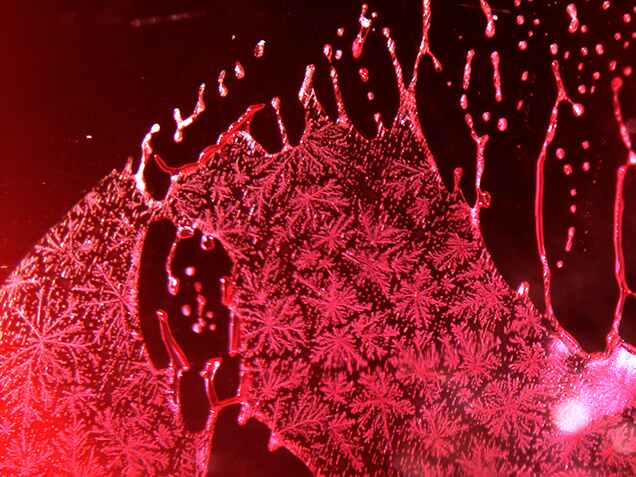The two main sources of Burmese ruby today are Mogok and Mong Hsu. Mogok is the traditional source of gem-quality ruby. The rubies from Mong Hsu are generally not as high in quality as those from Mogok, and typically show distinctive zoning with dark violet cores, a cloudy appearance, and multiple fractures. As a result, most stones from this deposit are heat treated at moderate temperatures using flux to repair fractures, improve clarity, and remove any unwanted blue color. Unheated Mong Hsu rubies are generally considered quite rare.
The author recently examined a 0.79 ct sugarloaf cabochon of pigeon’s blood ruby. Chemical analysis and gemological observation of internal features indicated that the origin of this stone was the Mong Hsu. Interestingly, microscopic examination with a combination of darkfield and oblique fiber-optic illumination revealed an open fissure with a snowflake-like pattern of flux residue (see above). The pattern is formed by the crystallization or devitrification of the glassy flux residue.
The snowflake is a symbol of the winter season and a traditional image associated with the Christmas holiday. This partially healed fissure resembling snowflakes is the first such feature the author has encountered in flux-heated ruby.
